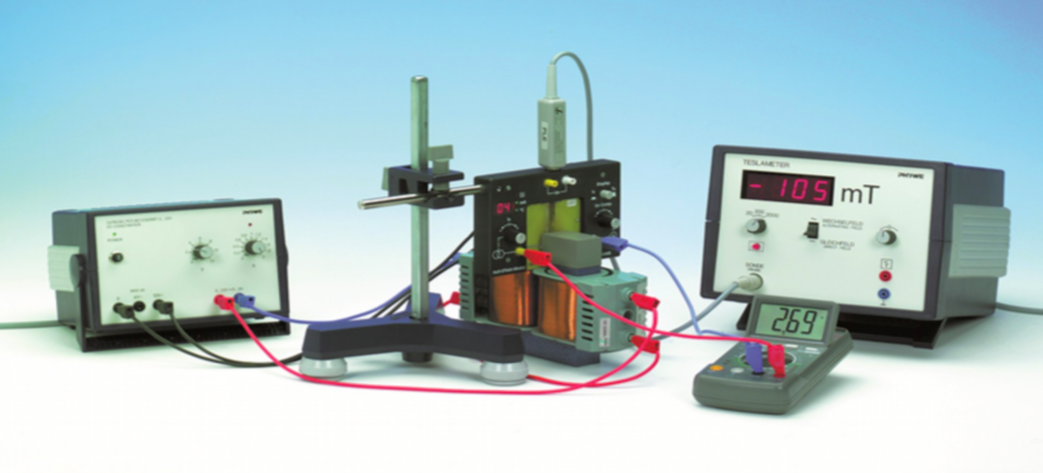Item no.: P2530101
Principle
The resistivity and Hall voltage of a rectangular germanium sample are measured as a function of temperature and magnetic field. The band spacing, the specific conductivity, the type of charge carrier and the mobility of the charge carriers are determined from the measurements.
Tasks
- The Hall voltage is measured at room temperature and constant magnetic field as a function of the control current and plotted on a graph (measurement without compensation for defect voltage).
- The voltage across the sample is measured at room temperature and constant control current as a function of the magnetic induction B.
- The voltage across the sample is measured at constant control current as a function of the temperature. The band spacing of germanium is calculated from the measurements.
- The Hall voltage UH is measured as a function of the magnetic induction B, at room temperature. The sign of the charge carriers and the Hall constant RH together with the Hall mobility mH and the carrier concentration p are calculated from the measurements.
- The Hall voltage UH is measured as a function of temperature at constant magnetic induction B and the values are plotted on a graph.
What you can learn about
- Semiconductor
- Band theory
- Forbidden zone
- Intrinsic conductivity
- Extrinsic conductivity
- Valence band
- Conduction band
- Lorentz force
- Magnetic resistance
- Mobility
- Conductivity
- Band spacing
- Hall coefficient

